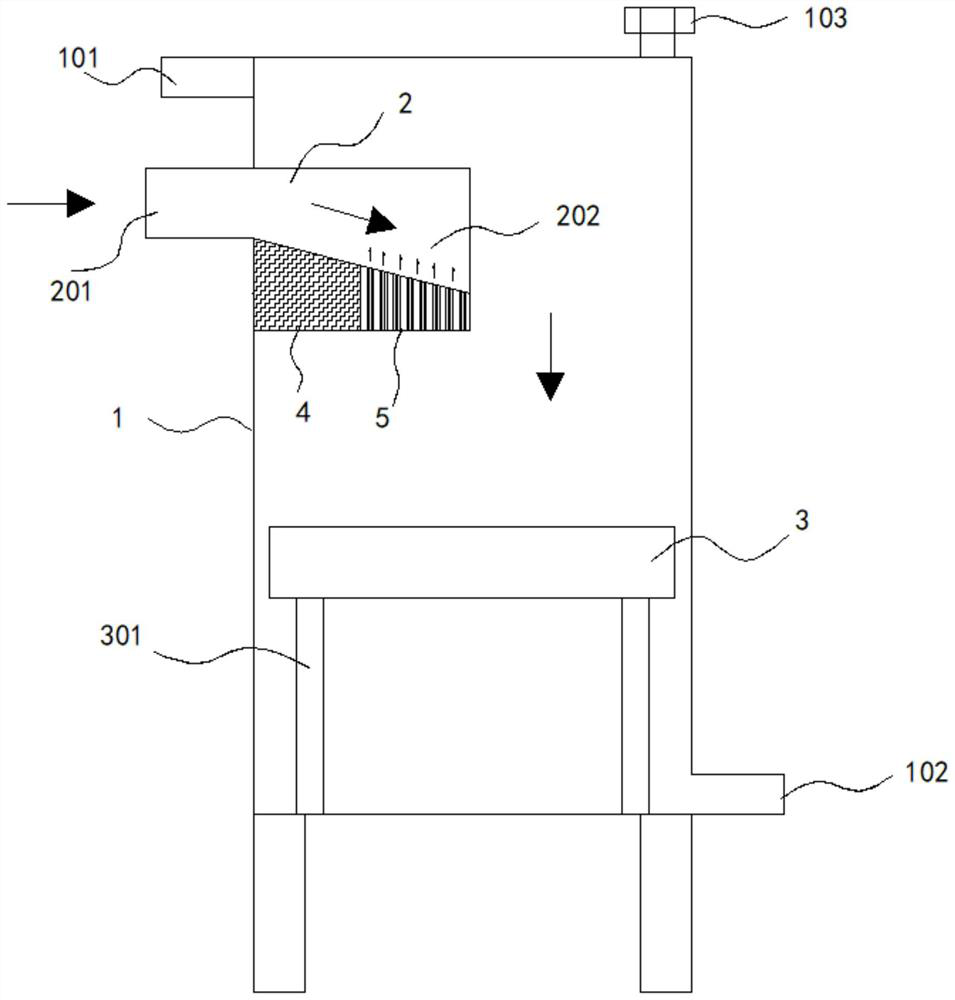Preparation method of gray cast iron inoculant
A technology of inoculants and gray cast iron, which is applied in the field of preparation of gray cast iron inoculants, can solve the problems of poor dispersion of inoculants, affecting the quality of castings, and low mixing uniformity, so as to avoid inability to float and diverge, improve quality, and mix The effect of uniformity improvement
- Summary
- Abstract
- Description
- Claims
- Application Information
AI Technical Summary
Problems solved by technology
Method used
Image
Examples
Embodiment 1
[0044] A preparation method of a gray cast iron inoculant, comprising:
[0045] Use chromium metal, chromium alloy, silicon calcium, phosphide, manganese metal, manganese compound, vanadium ferroalloy, vanadium compound, silicon barium alloy as raw material, the chemical composition mass percentage in the raw material is: Si 25%, Mn 20%, Cr 25% , C<0.10%, Ca1.5%, Ba 1.5%, N 1.2%, P<0.05%, S<0.02%, the rest is Fe;
[0046] Raw materials with a good ratio are smelted above 1500°C, filled with nitrogen as an inert gas for foaming, and the foamed material is obtained after foaming and cooling;
[0047] Break the foamed material into 1-2mm particles, and then place it in a closed container;
[0048] Evacuate the air in the airtight container, then fill it with nitrogen as an inert gas and pressurize to 0.5MPa;
[0049] Inject the molten film-forming agent into the airtight container so that the surface of the foaming material particles is coated with the film-forming agent, and the...
Embodiment 2
[0053] A preparation method of a gray cast iron inoculant, comprising:
[0054] Use chromium metal, chromium alloy, silicon calcium, phosphide, manganese metal, manganese compound, vanadium ferroalloy, vanadium compound, silicon barium alloy as raw material, the chemical composition mass percentage in the raw material is: Si 35%, Mn 10%, Cr 15% , C<0.10%, Ca1.5%, Ba 1.5%, N 0.8%, P<0.05%, S<0.02%, the rest is Fe;
[0055] Raw materials with a good ratio are smelted above 1500°C, filled with nitrogen as an inert gas for foaming, and the foamed material is obtained after foaming and cooling;
[0056] Break the foamed material into 1-2mm particles, and then place it in a closed container;
[0057] Evacuate the air in the airtight container, then fill it with nitrogen as an inert gas and pressurize to 0.2MPa;
[0058] Inject the molten film-forming agent into the airtight container so that the surface of the foaming material particles is coated with the film-forming agent, and t...
Embodiment 3
[0062] The difference from Example 1 is that the foaming process uses ultrasonic treatment for foaming and conventional gas filling for foaming, and other steps are the same. The differences are specifically:
[0063] Melt the mixed raw materials for 5 minutes at a temperature above 1500°C. Under protective measures, use ultrasonic equipment to directly sonicate the smelted raw materials, and at the same time inject nitrogen as an inert gas to make the smelted raw materials foam until they are cooled and solidified to obtain foamed materials. . The ultrasonic power of ultrasonic treatment is 50-80KHz, the inert gas is sprayed into the smelting raw material through the spray valve, and the injection frequency of the spray valve is above 100Hz, and the single injection volume is below 0.1uL.
[0064] In this embodiment, in the molten state of raw materials, ultrasonic treatment can produce cavitation effect and cause foaming. The inert gas introduced is contained in the foam. W...
PUM
 Login to View More
Login to View More Abstract
Description
Claims
Application Information
 Login to View More
Login to View More - R&D
- Intellectual Property
- Life Sciences
- Materials
- Tech Scout
- Unparalleled Data Quality
- Higher Quality Content
- 60% Fewer Hallucinations
Browse by: Latest US Patents, China's latest patents, Technical Efficacy Thesaurus, Application Domain, Technology Topic, Popular Technical Reports.
© 2025 PatSnap. All rights reserved.Legal|Privacy policy|Modern Slavery Act Transparency Statement|Sitemap|About US| Contact US: help@patsnap.com

